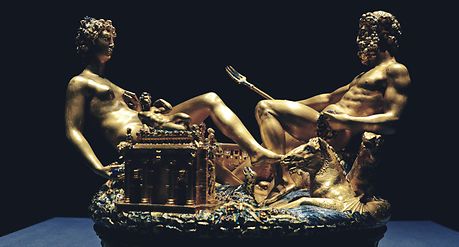The small salt barrel had been stolen. The excitement in Austria was great because the Saliera was secretly regarded as a symbol of Austrian art and cultural treasures. After an initially broad media coverage, global search and various finger-pointing, it gradually became quieter around the ‘Saliera case’. The thief, however, aroused public attention a few times, such as when he made fun of the Saliera’s safety in a radio interview on the subject of security or when he anonymously demanded a 5 million euro ransom. In October 2005, the thief sent the police the detachable trident of the Saliera together with a demand of 10 million euros ransom. Through a scavenger hunt and SMS he wanted to handle the exchange. Despite his use of many disposable cell phones, the police identified the burglar and published a picture of him. He then reported to the police, but wanted to wash his hands off the crime. When the burden of proof against him became too overwhelming, he confessed on January 21st, 2006. When asked why he had stolen just the small salt barrel, the thief said: “The Saliera is so handy. I couldn’t have taken a painting that easily.” He made the burglary not for financial reasons, but simply to show how bad the security system was. He returned the artwork undamaged. Almost 1,000 days after the kidnapping, the Saliera was once again put on public display at the Museum of Fine Arts. The thief was convicted, but has already served his sentence.







